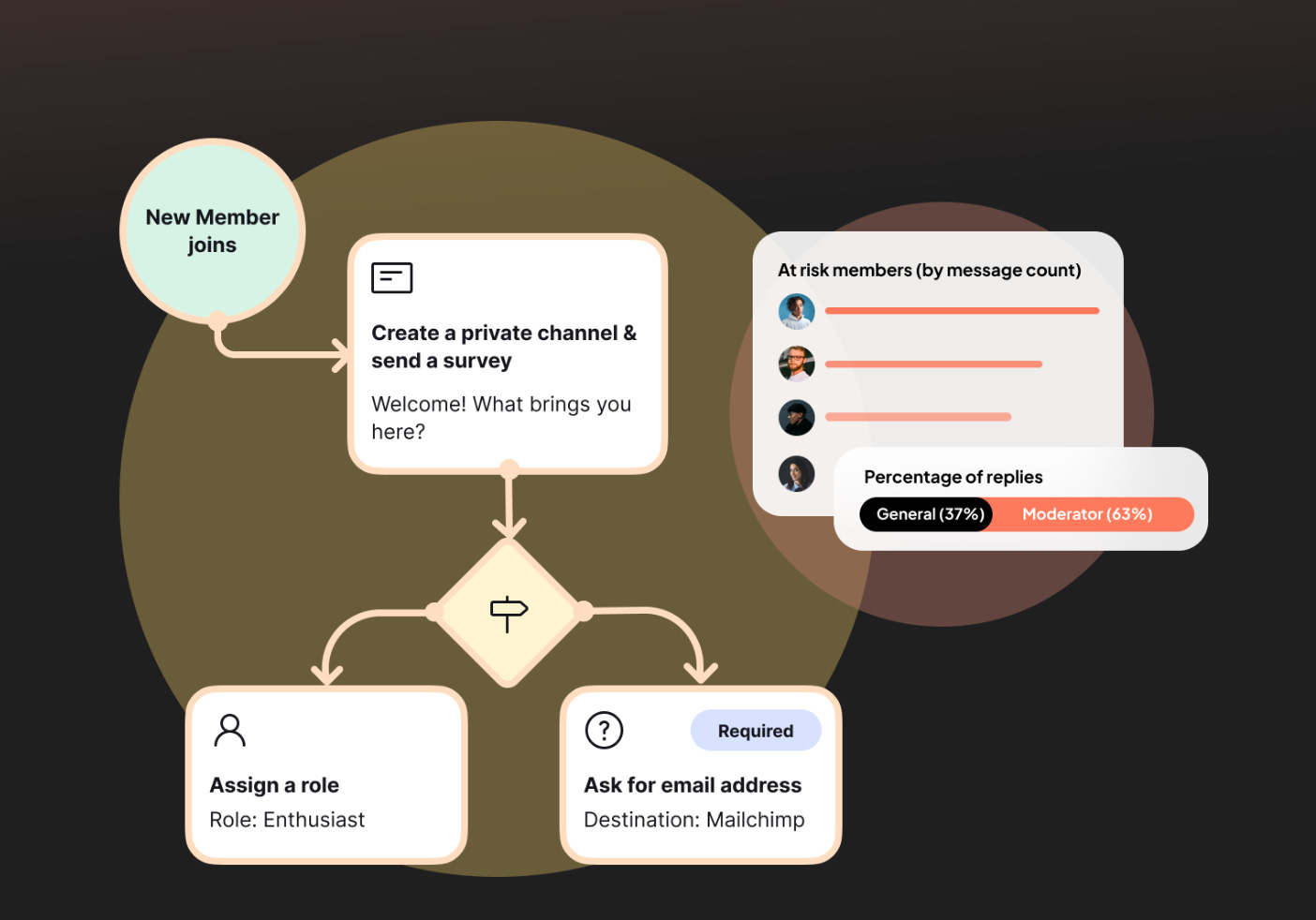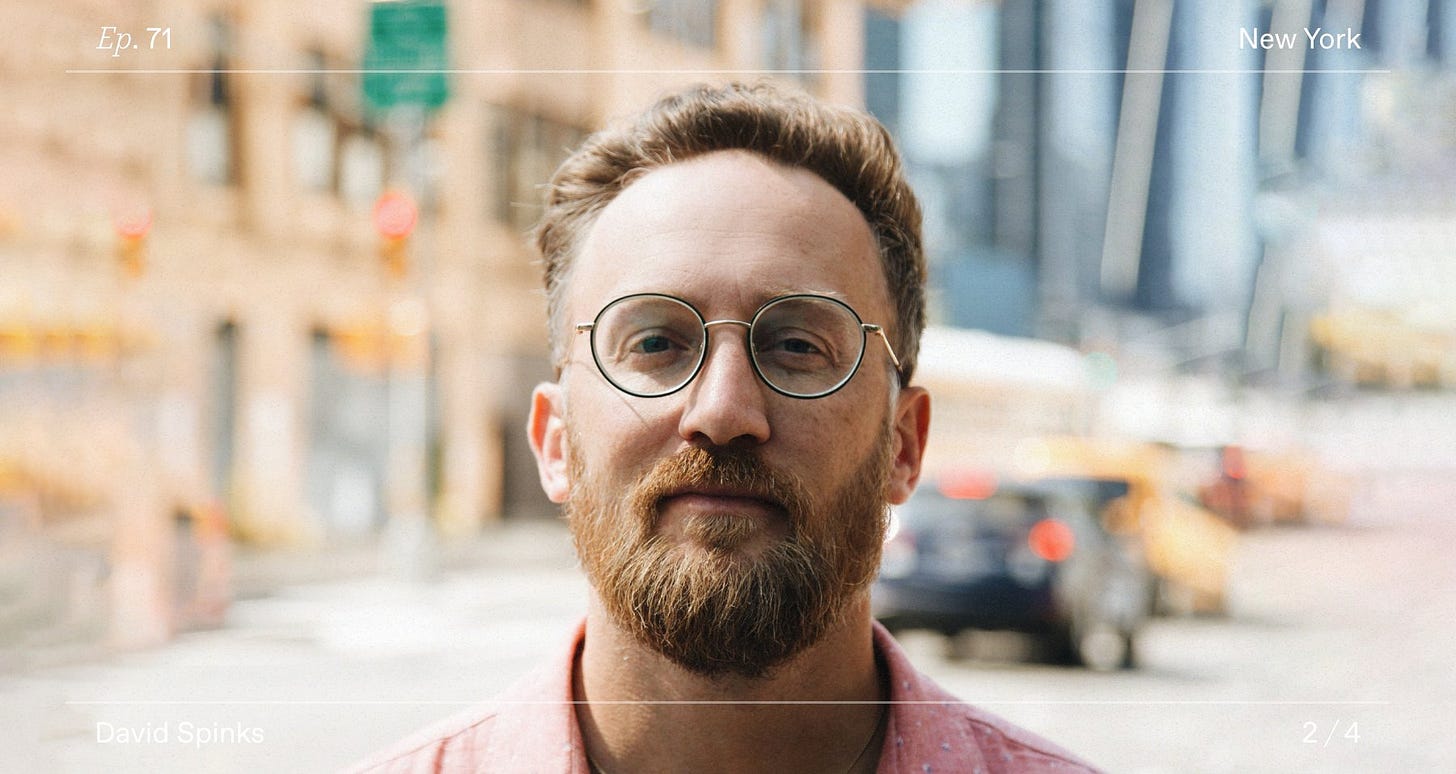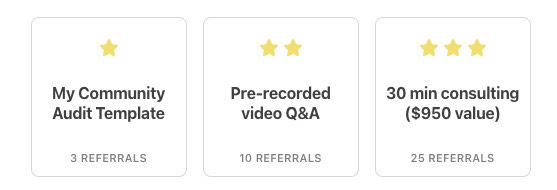A friend of mine recently launched a very successful membership community, hosted on Slack.
In just one year they signed up hundreds of members who are paying thousands of dollars.
Their goal is to get to eventually get to 10,000 members.
They recently reached out and ask me:
“What should we be thinking about as we scale to 1,000 then 5,000 then 10,000 members on Slack? What issues are we going to run into? What should we plan for?”
I thought I’d share with all of you what I shared with them. Some of these points are specific to Slack, but many of them can be applied to any community.
BY THE END OF THIS EMAIL, YOU’LL LEARN:
✔️ The enormous importance of founding members
✔️ How to turn conversations into content
✔️ Community creep: the silent killer
✔️ The keys to scaling intimacy
✔️ How to build a community operating system
THE ENORMOUS IMPORTANCE OF FOUNDING MEMBERS
This post isn’t about how to acquire new members, it’s about how to make sure your community doesn’t break as it grows.
That said, I know you’re probably wondering how they grew a paid community so quickly out the gate.
Three things they did:
The founder had a big audience and a strong reputation already
They leveraged their network to get well-known people to join as founding members (for free)
They hit the phones and sold the community one at a time, using the name recognition of the founding members as a draw
That’s it. It all hinged on getting high-status founding members their target audience would want to be in a room with.
Since these founding members were very busy, they manually wrote up content for them to post in the community. It make it look like those members were organically active.
Effective? Yes. Ethical? You decide.
Regardless, it worked. Their community grew fast, and by seeding the community with content they knew was high quality, they set a strong model for how other members should participate in the community. It’s now growing fast in both new members and engagement.
Of course, with fast growth, things can break down pretty quickly, so let’s talk about how to manage that scale…
HOW TO TURN CONVERSATIONS INTO CONTENT
If you’re using the free plan on Slack, your content will disappear after 90 days.
But even if you’re not on Slack, after 90 days your community essentially disappears. Communities, especially chat-based communities, are notoriously bad at resurfacing old content.
That’s a shame, because your community is a goldmine of content.
The simplest solution is to use a tool like Waves to save and organize all your Slack conversations.
But there’s a more impactful way to save your conversations:
Convert the most interesting conversations into readable, delightful content.
Don’t copy and paste the threads. That’s boring.
Instead, write an article and reference the best community content. The reader doesn’t have to know that the article is sourced from the community. They just see good content.
A community that does this phenomenally is Finimize. They watch closely what their members are talking about in the community, and quickly turn the hottest topics into content that goes out in their newsletter.
This content 🔄 community flywheel is an absolute goldmine.
COMMUNITY CREEP: THE SILENT KILLER
Communities always start simple.
Then they add a channel here, a ritual there, and slowly the CX (community experience) becomes complex and confusing.
That’s why you must ABC: Always Be Culling.
Every three months do an audit.
Cull any channels that are dead or low engagement.
Cull any rituals that people haven’t been participating in.
Cull any events that have been seeing low turnout rates.
Focus on the 20% of your community experience that’s driving 80% of engagement.
This will free up your time to run 1-2 experiments every few months for new content and experiences that will keep your community feeling fresh.
You should also practice the art of being bossy and teach your members how to keep their sidebar tidy. Slack offers a guide you can borrow from here.
THE KEYS TO SCALING INTIMACY
As your community grows, it will become less intimate…
...if you let it.
When members join your community you want them to feel seen and valued. If they feel like "just another number”, you’ve already lost.
A few ways you can scale intimacy for new members:
Volunteer welcome committees
Buddy systems where each new member gets assigned to an experienced member
New member cohorts where they get to know each other before entering the large community
Keep improving your welcome experience to make the content less overwhelming for new members:
Recommend the first few channels they should join
Show them examples of great questions to ask
Drip them content that summarizes popular conversations in the community
For existing members, you can offer “pods” where members are assigned to groups of 8-10 members who meet monthly.
The Dinner Party is a great example of a large, national community, where the member experience is very intimate (small, potluck dinners, in their homes).
YPO and Chief offer small mastermind and coaching pods where members meet every month.
Pods and small, volunteer-led groups are a great way to scale intimacy.
HOW TO BUILD A COMMUNITY OPERATING SYSTEM
Document 👏 everything 👏.
Let me say that again.
DOCUMENT 👏 EVERYTHING 👏.
This is something I didn’t do nearly enough early on in my community career.
Every time you do something that you’ll have to do again in the future, turn it into a process doc:
✍️ Onboarding a new member? Write it down.
✍️ Responding to an angry member? Write it down.
✍️ Exporting data to a spreadsheet? Write it down.
Over time you’ll develop a full guide on how to operate your community. Any time you have to run a process, you’ll have a step-by-step guide to follow. Hiring someone to work on the community? Just hand them the guide.
Over time you’ll start to identify opportunities to automate some of these processes.
Slack has a lot of great automation tools:
There are also a number of general automation tools like Threado, Common Room, Orbit, Talkbase, Waves, and Dots.
These tools will allow you to trigger actions based member activity, like:
Send a message when someone goes inactive
Deliver a survey out 30 days after a member joins
Ship out swag when someone reaches a certain level of activity
But remember: Every time you use a bot to do something a human would usually do, you lose the human touch, you lose intimacy, and you lose an opportunity to build a relationship with members. So only use bots when you absolutely have to or when you can still make it feel human.
HERE’S WHAT WE COVERED TODAY:
✔️ The enormous importance of founding members
✔️ How to turn conversations into content
✔️ Community creep: the silent killer
✔️ The keys to scaling intimacy
✔️ How to build a community operating system
🍭 Brain Candy
Some goodies to get your community gears turning…
🤖 I’m a bot! Thanks to Threado’s new AI tool (still in beta), you can ask my bot anything and get answers, sourcing from most of the content I’ve ever created. Test it out and let me know what you think.
😑 Covid made us socially awkward and people forgot how to act in public.
🏡 They say that living close to your friends is the dream. Use this app to make it happen.
💌 There’s a new newsletter in town, doing deep dives of community-led businesses. I’m a fan. Check it.
📖 I did a fun interview with The Breakfast, a publication and app focused on reducing loneliness.
🔥 Featured Community Jobs
Head of Marketing and Community, GTM Fund (Remote)
Community Manager, Scholastic (NYC | $85,000 - $95,000)
Community Engagement Program Manager, Square (Remote | $77,900-$126,900)
👉 Explore 37 more community jobs
There are now 242 candidates in the collective with recent additions from Meta, Intel, WaPo, and more.
Use the code “starthiring” to get your first month free. Offer is available until Sept 30th.
I love writing this newsletter. If you love reading it, help me out by spreading the word. You can earn some nifty gifts for referring readers. 👇
🫡 THAT’S ALL FOR NOW…
I’m still figuring out where I want to take this newsletter and my content. I’ve been thinking about three paths:
Community Creators - Focusing on helping people build businesses where community is the core product, writing case studies and behind-the-scenes content.
Social Science - I’m realizing that I’m interested in broader topics of human connection and social psychology, not *just* community. I’ve toyed with the idea of a newsletter and podcast called “Social Studies” where I research and teach these subjects in a fun and relatable way.
Social Fitness - There are a lot of people who are struggling with loneliness and don’t know how to connect with other humans. I expect there to be a big new wave of social health and fitness content and products. I could take everything I’ve learned and turn it into actionable content to help people improve their social health.
Your feedback and reflections are what keep me going so hit reply and tell me what you think of these paths, and of today’s newsletter.
Until next time…
Thanks for building community!
-David







In relation to your three paths, I’m assuming you know about Hidden Brain podcast. Great discussion about a variety of social science topics
I dig that "here's what we covered today" David.